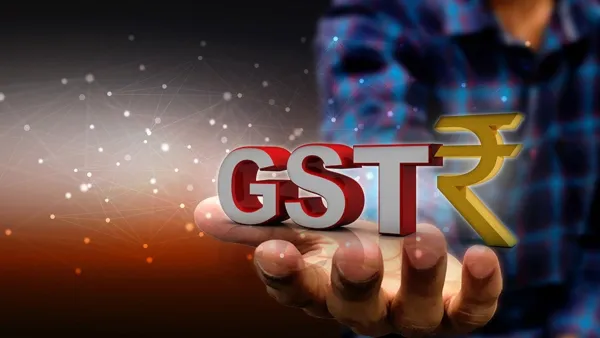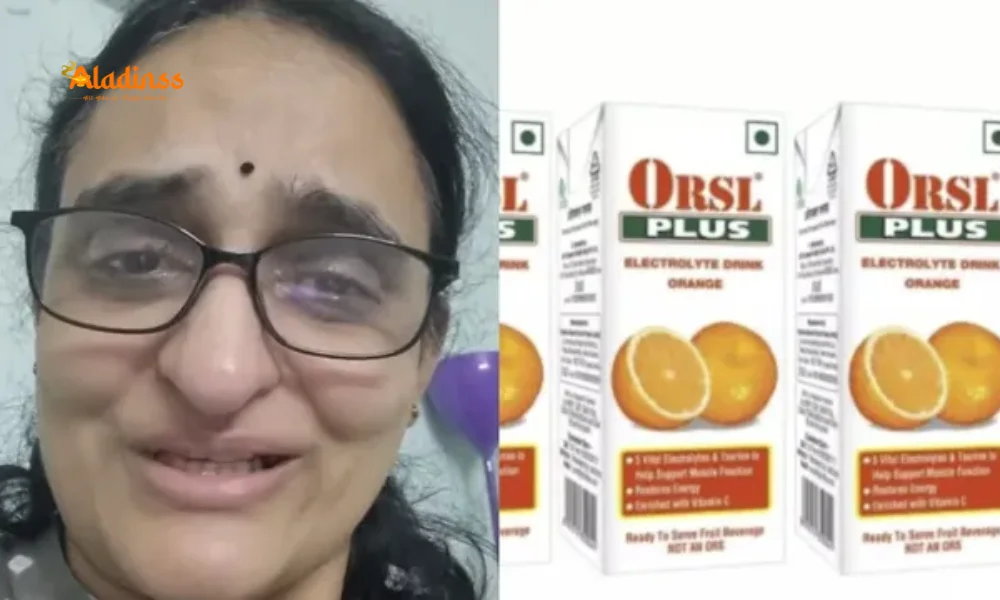New GST Rates 2025: Full List of 5% and 18% Items

New GST Rates 2025: Items Under 5% and 18% Slabs
In a landmark decision, the Goods and Services Tax (GST) Council, in its 56th meeting held on September 3, 2025, in New Delhi, approved a simplified two-slab tax structure of 5% and 18%, effective from September 22, 2025. This overhaul replaces the previous four-tier structure of 5%, 12%, 18%, and 28%, aiming to reduce the tax burden on consumers and stimulate domestic consumption. A special 40% slab has been introduced for luxury and sin goods, such as tobacco and high-end vehicles. Finance Minister Nirmala Sitharaman emphasized that the reforms prioritize the common man, with significant reductions in taxes on daily essentials, healthcare, and agricultural products. This article details the items now taxed at 5% and 18%, offering a comprehensive guide to the new GST rates in India for 2025.
Overview of the GST Reform
The new GST structure marks a significant shift in India’s indirect tax system, introduced in 2017 to unify multiple taxes under the “One Nation, One Tax” initiative. The GST Council, chaired by Finance Minister Nirmala Sitharaman and comprising representatives from all states and Union Territories, conducted a marathon 10.5-hour meeting to finalize these changes. The simplified two-slab system eliminates the 12% and 28% slabs, except for specific sin and luxury goods, which now fall under a new 40% slab. This reform is expected to boost consumer spending, particularly during the festive season starting with Navratri on September 22, 2025, and continuing through Diwali on October 20, 2025.
The reforms also address structural issues, such as the inverted duty structure, where inputs are taxed at higher rates than finished products, causing working capital challenges for businesses. Additionally, measures like pre-filled GST returns, faster refunds, and simplified registration processes aim to enhance compliance and ease of doing business, particularly for Micro, Small, and Medium Enterprises (MSMEs). The government estimates a revenue loss of approximately Rs. 48,000 crore annually due to these cuts but anticipates that increased consumption will offset this through higher tax collections over time.

Items Under the 5% GST Slab
The 5% GST slab is designed to cover essential and semi-essential goods and services, ensuring affordability for households, farmers, and students. Approximately 99% of items previously taxed at 12% have been shifted to this slab, significantly reducing costs for daily-use products. Below is a detailed breakdown of the categories and items now taxed at 5%.
Daily Essentials
The GST Council has prioritized reducing taxes on daily-use household items to alleviate the financial burden on the common man. Items previously taxed at 12% or 18% have now been moved to the 5% slab, making them more affordable. These include:
- Hair oil, shampoo, toothpaste, toilet soap, toothbrushes, and shaving cream (previously 18%)
- Butter, ghee, cheese, and dairy spreads (previously 12%)
- Pre-packaged namkeens, bhujia, and mixtures (previously 12%)
- Utensils for kitchen use (previously 12%)
- Feeding bottles, napkins for babies, and clinical diapers (previously 12%)
- Sewing machines and their parts (previously 12%)
These reductions are expected to lower household expenses, particularly for low- and middle-income families, and boost consumption of fast-moving consumer goods (FMCG) during the festive season.
Healthcare Products
Healthcare affordability has been a key focus of the GST reforms. Several medical products and services have seen significant tax reductions, with some moving to nil GST. Items now taxed at 5% include:
- Thermometers (previously 18%)
- Medical-grade oxygen (previously 12%)
- Diagnostic kits and reagents (previously 12%)
- Glucometers and test strips (previously 12%)
- Corrective spectacles (previously 12%)
Notably, individual health and life insurance policies have been fully exempted from GST (previously 18%), and 33 life-saving drugs have also been moved to the nil-rated category, providing significant relief to families facing medical expenses.
Farm and Agriculture
The agricultural sector, a critical pillar of India’s economy, benefits from reduced GST rates on essential equipment and inputs. Items now taxed at 5% include:
- Tractor tyres and parts (previously 18%)
- Tractors (previously 12%)
- Bio-pesticides and micro-nutrients (previously 12%)
- Drip irrigation systems and sprinklers (previously 12%)
- Agricultural, horticultural, and forestry machines (previously 12%)
These reductions aim to support farmers by lowering the cost of critical inputs, enhancing productivity, and promoting sustainable agricultural practices.
Education Supplies
To make education more accessible, several school and study essentials have been moved to the nil-rated category or the 5% slab. Items now taxed at 5% or exempted include:
- Maps, charts, and globes (previously 12%, now nil)
- Pencils, sharpeners, crayons, pastels (previously 12%, now nil)
- Exercise books and notebooks (previously 12%, now nil)
- Erasers (previously 5%, now nil)
These exemptions and reductions are expected to lower the cost of education, benefiting students and parents, particularly in rural areas.
Items Under the 18% GST Slab
The 18% GST slab encompasses high-value goods and services, including automobiles and electronic appliances, many of which were previously taxed at 28%. Approximately 90% of items from the 28% slab have been shifted to this category, making aspirational goods more affordable. Below are the key categories under the 18% slab.
Automobiles
The automotive sector, a significant contributor to India’s economy, benefits from substantial tax reductions. Vehicles now taxed at 18% include:
- Petrol, petrol hybrid, LPG, or CNG cars with engine capacity up to 1200 cc and length up to 4000 mm (previously 28%)
- Diesel and diesel hybrid cars with engine capacity up to 1500 cc and length up to 4000 mm (previously 28%)
- Three-wheeled vehicles (previously 28%)
- Motorcycles with engine capacity up to 350 cc (previously 28%)
- Motor vehicles for the transport of goods (previously 28%)
These reductions are expected to boost sales for companies like Maruti Suzuki, Hero MotoCorp, and Tata Motors, particularly in the small car and two-wheeler segments.
Electronic Appliances
Consumer durables, previously taxed at 28%, have been brought under the 18% slab to make them more accessible to the middle class. These include:
- Air conditioners (previously 28%)
- Televisions above 32 inches, including LED and LCD (previously 28%)
- Monitors and projectors (previously 28%)
- Dishwashing machines (previously 28%)
This move is likely to spur demand for white goods, supporting manufacturers and retailers during the festive season.
Items Under the 40% GST Slab
A new 40% GST slab has been introduced for luxury and sin goods to offset the revenue loss from the tax cuts. This slab targets high-end products and demerit goods, ensuring that essential items remain affordable while luxury consumption bears a higher tax burden. Categories under the 40% slab include:
- **Tobacco and Pan Masala (Sin Goods):** Pan masala, gutka, chewing tobacco, cigarettes, cigars, cheroots, cigarillos, and unmanufactured tobacco (excluding leaves).
- **Aerated and Sugary Beverages:** Carbonated drinks, cold drinks with sugar, and caffeinated carbonated beverages.
- **Luxury Cars:** Petrol cars with engine capacity above 1200 cc and diesel cars with engine capacity above 1500 cc.
- **High-End Motorcycles:** Motorcycles with engine capacity above 350 cc.
- **Super-Luxury Marine and Aircraft:** Yachts and personal aircraft, including helicopters.
- **Other Sin or Luxury Items:** Coal, lignite, peat, and online gambling and gaming services.
Notably, tobacco products and cigarettes will temporarily remain at 28% GST plus compensation cess until pending loans are cleared, after which they will transition to the 40% slab.
Economic and Consumer Impact
The GST rate reductions are expected to have a significant impact on consumer behavior and economic growth. By lowering taxes on daily essentials, healthcare, and agricultural inputs, the government aims to increase disposable income, particularly for low- and middle-income households. This is likely to boost consumption, which accounts for over 60% of India’s GDP, and stimulate demand across sectors like FMCG, automotive, and consumer durables.
The reduction in GST on construction materials like cement (from 28% to 18%) is expected to lower building costs, benefiting the real estate sector and supporting the government’s “Housing for All” mission. Similarly, the tax cuts on small cars and two-wheelers are anticipated to drive sales, providing a boost to major manufacturers like Maruti Suzuki, Hero MotoCorp, and Hyundai Motor India.
The reforms also address global economic challenges, such as potential US tariffs, by encouraging domestic consumption and reducing reliance on exports. Economists predict that the GST cuts could lead to a 50-60 basis point reduction in inflation over the next year, creating room for monetary policy adjustments by the Reserve Bank of India.
Comment / Reply From
No comments yet. Be the first to comment!











